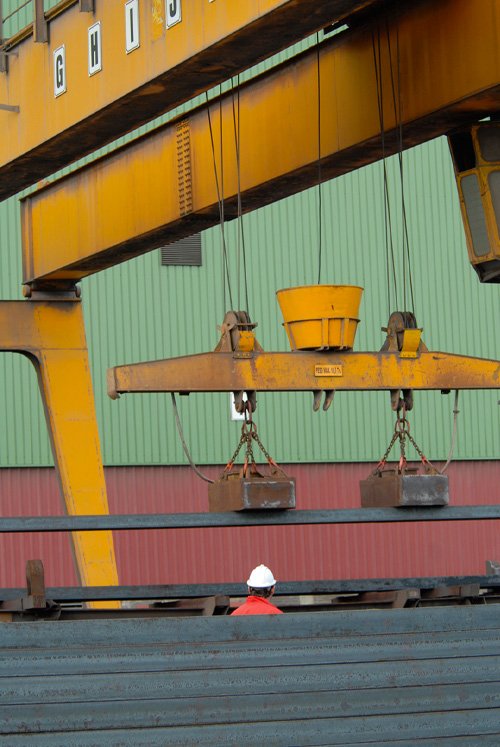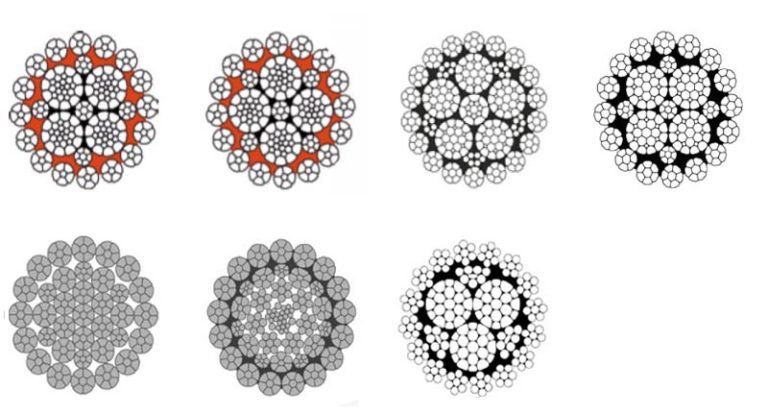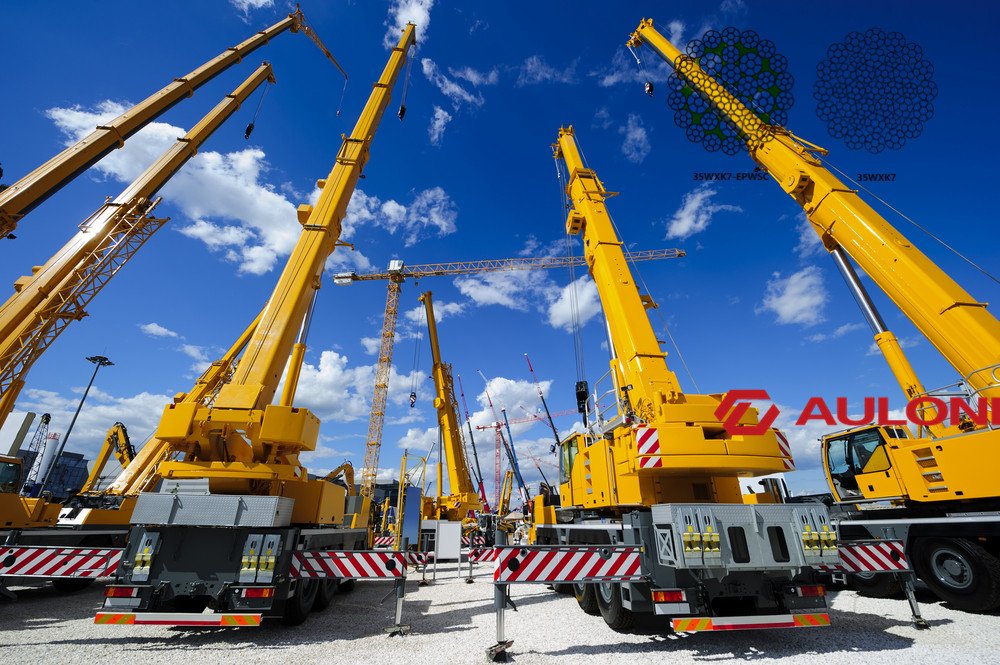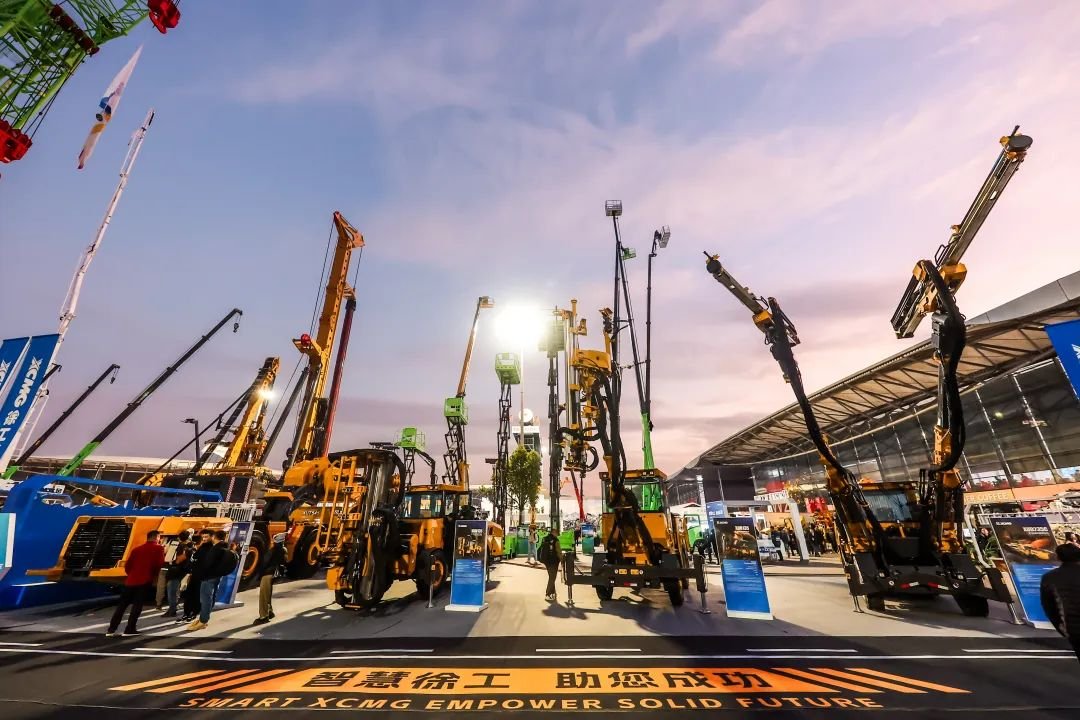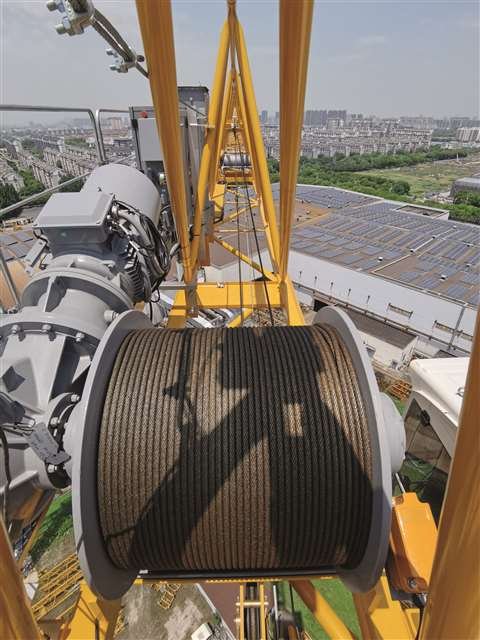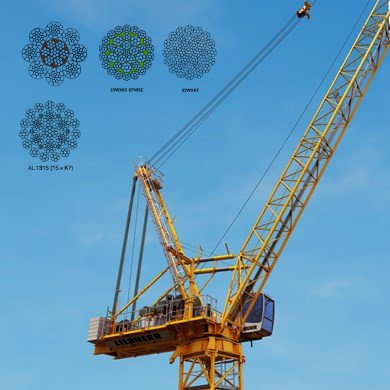A failing crane rope stops your entire project and costs you money. The wrong choice can lead to catastrophic failure. But selecting the right one is straightforward with the right knowledge.
Choosing the best crawler crane wire rope involves matching the rope’s construction, core type, and diameter to the crane’s specifications. Always prioritize rotation-resistant properties and compliance with international standards like EN12385-4 for safety and performance.
I remember a client whose project was delayed by a week due to a snapped rope. This costly mistake was completely avoidable. Let’s break down how to prevent that from happening to you.
What Are the Most Common Types of Wire Rope for Crawler Cranes?
Your crane is a powerful machine. It needs the right kind of rope. Let’s look at the main options available for heavy lifting tasks.
The most common types are rotation-resistant (RR) ropes, like 19×7 or 35×7 constructions. These are engineered to minimize twisting under load, which is crucial for single-line hoisting operations common with crawler cranes.
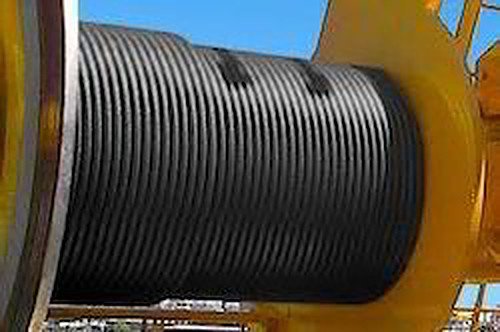
Dive Deeper: A Closer Look at Your Options
When you look at a wire rope catalog, the codes and terms can be confusing. But they all point to three main categories that are important for crane operations. The choice among these depends on your specific working conditions and load requirements.
Rotation-Resistant (RR) Ropes
These are the workhorses for crawler crane hoisting. Think of a standard rope twisting as you pull on it. Now imagine that happening with a 50-ton load hanging hundreds of feet in the air. RR ropes are designed with multiple layers of strands. The inner and outer layers are wrapped in opposite directions. This design creates a counter-torque effect, so the rope remains stable under load. That’s why specifications like 19x7 and 35x7 are so common. They are built for stability.
Compacted Strand Ropes
Compacted ropes are a step up in durability and strength. During manufacturing, the strands are passed through a die or roller that flattens their surface. This process makes the rope denser and smoother. The main benefit is a higher breaking load compared to a standard rope of the same diameter. The smooth surface also means less wear on your crane’s sheaves and drums, which can extend the life of your equipment.
Plastic Impregnated (PI) Ropes
Imagine a wire rope with a plastic cushion inside. That’s a Plastic Impregnated rope. A special polymer is injected into the rope, filling the spaces between the strands and the core. This does two things. First, it locks in the factory lubrication, ensuring the core stays healthy for longer. Second, it creates a barrier that keeps out dirt, moisture, and corrosive elements. If you operate in marine environments, sandy deserts, or areas with high humidity, a PI rope is a fantastic investment in longevity.
Here is a simple table to compare them:
| Feature | Standard RR Rope | Compacted RR Rope | Plastic Impregnated RR Rope |
|---|---|---|---|
| Primary Benefit | Load Stability | Higher Strength & Wear Resistance | Core Protection & Lubrication |
| Surface Profile | Round Strands | Smoother, Flatter Strands | Encased in Plastic |
| Best For | General Hoisting | High-Load, High-Wear Lifts | Harsh & Corrosive Environments |
| Cost | Baseline | Moderate | Higher |
How Do Construction and Core Type Affect Performance?
The “inside” of a wire rope matters just as much as the outside. The core and wire arrangement determine its strength, flexibility, and lifespan.
A rope’s construction, such as 6x19 or 19x7, dictates its flexibility and resistance to crushing. The core, either IWRC (steel) or a fiber core, provides foundational support and affects the rope’s strength and environmental resistance.
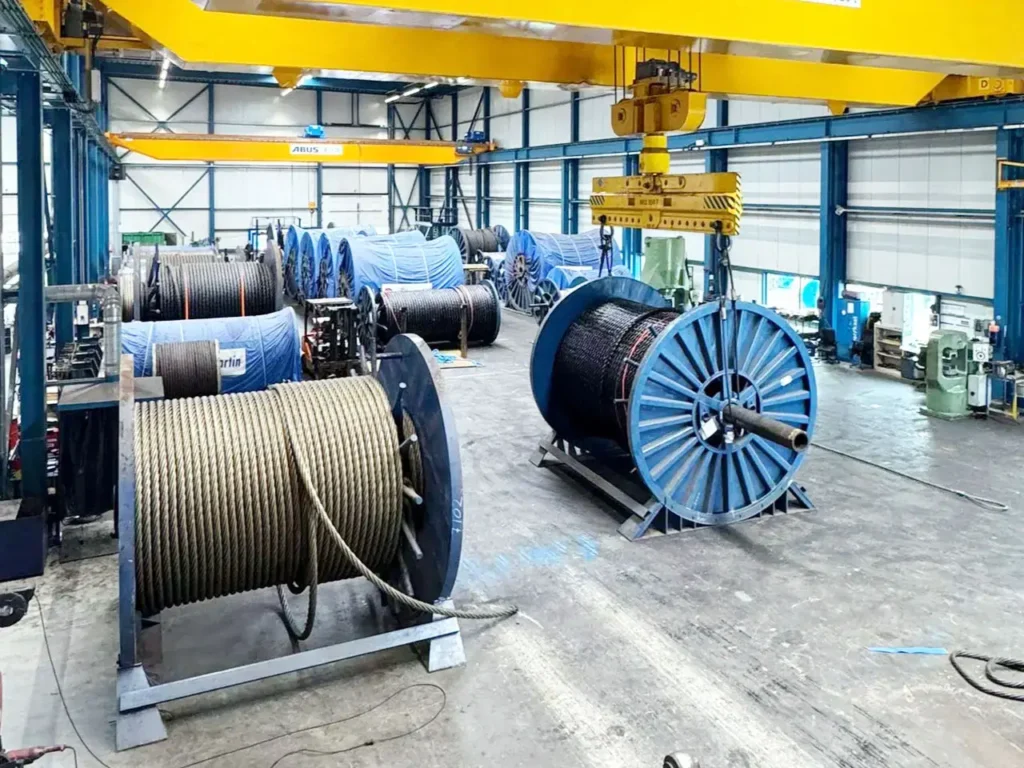
Dive Deeper: Deconstructing the Rope
When we manufacture a wire rope, every decision impacts how it will behave on your crane. Two of the most fundamental choices are the construction layout and the type of core at its center.
Understanding Rope Construction (e.g., 19x7)
This looks like a technical code, but it’s simple. The first number tells you the number of strands in the rope. The second number tells you how many individual wires are in each strand.
- A
19x7rope has 19 strands, and each of those strands is made of 7 wires. This is a common construction for rotation-resistant ropes. - A
6x36rope has 6 strands, and each of those strands is made of 36 wires. More wires per strand generally means the rope is more flexible but more susceptible to abrasion.
For hoisting, you need a balance. You want enough flexibility to run smoothly over sheaves, but enough toughness to resist crushing on the drum. That’s why rotation-resistant designs like 19x7 and 35x7 are preferred for crawler cranes.
The Role of the Core: IWRC vs. FC
The core is the heart of the wire rope. It supports the outer strands and helps them maintain their position. There are two main types.
- IWRC (Independent Wire Rope Core): This is a small wire rope running inside the main rope. It provides solid support, high strength, and excellent crush resistance. This is the standard and most recommended core for crane hoisting applications. It provides a strong foundation for the outer strands.
- FC (Fiber Core): This core is made of natural or synthetic fibers, like polypropylene. Fiber cores are more flexible and can hold more lubrication than a steel core. However, they offer very little crush resistance and are not suitable for the main hoist lines of large cranes. They can break down in harsh environments or under heavy, multi-layer spooling.
Here is a direct comparison:
| Core Type | Independent Wire Rope Core (IWRC) | Fiber Core (FC) |
|---|---|---|
| Strength | High | Lower |
| Crush Resistance | Excellent | Poor |
| Flexibility | Good | Excellent |
| Primary Use | Crane Hoisting, High Loads | General purpose, elevators, low loads |
For any serious crawler crane operation, an IWRC is the only safe choice for the main hoist rope.
Why Is Rotation Resistance So Critical for Crane Ropes?
Imagine lifting a heavy load, and it starts spinning out of control. This is a real danger. Rotation-resistant ropes prevent this from happening daily.
Rotation resistance prevents the load from spinning, ensuring stability and safety. This is vital for single-part reeving systems on crawler cranes, where a spinning block can twist lines, damage the rope, and create a hazardous situation.
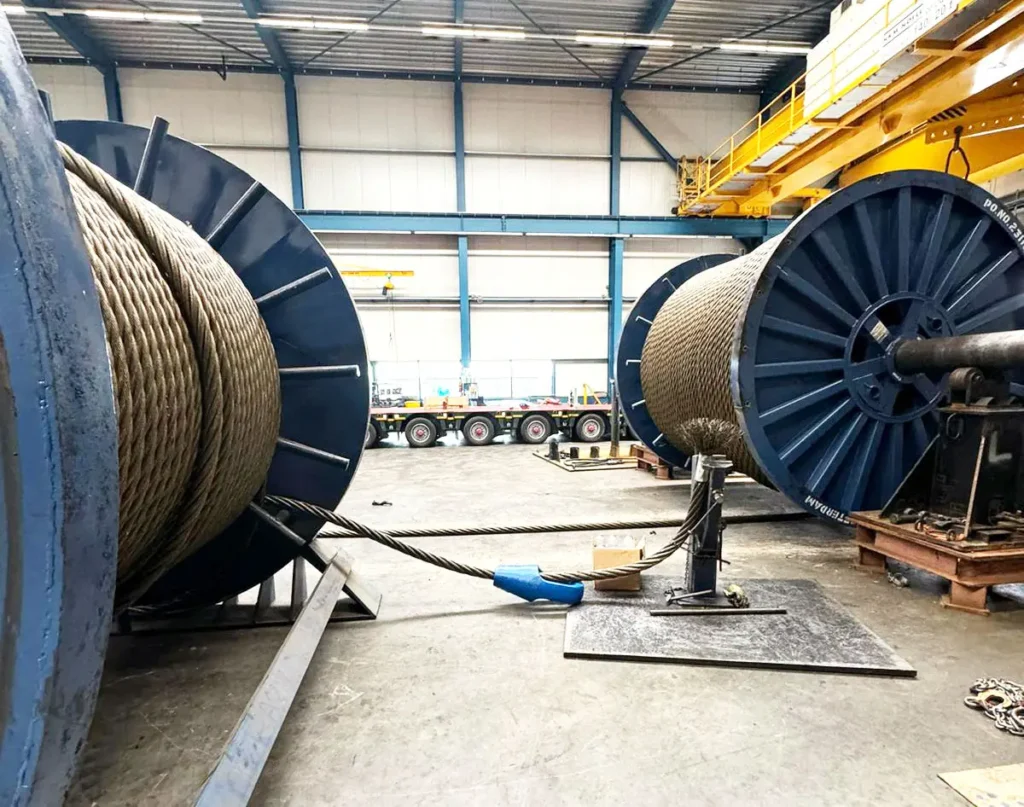
Dive Deeper: The Physics of Safety
It may seem like a minor detail, but a rope’s tendency to rotate under load is a major safety issue in lifting operations.
The Physics of Rope Torque
A standard wire rope is made of strands twisted together in one direction. When you put a heavy load on it, the rope tries to unwind. This is a natural release of the energy put into it during manufacturing. For many applications, this is not a problem. But when you are lifting a load on a single line of rope, this untwisting force translates directly to the hook and the load. The load will start to spin. This is not only unpredictable but extremely dangerous for people on the ground.
How RR Ropes Work
I explained earlier that rotation-resistant ropes have layers of strands wrapped in opposite directions. The torque generated by the outer layer is cancelled out by the opposite torque from the inner layer or layers. The result is a rope that remains “torque neutral” or balanced. When you lift a load, it goes straight up and down without spinning. This stability is essential for the precise placement of materials and for the safety of the entire job site.
Consequences of Using a Non-RR Rope
Using the wrong rope, like a standard 6x19 rope, for a single-line hoist is a serious mistake. I have seen photos from safety incidents that show the consequences.
- Load Spinning: The load and block can spin uncontrollably, posing a direct hazard.
- Rope Damage: The untwisting action can cause the rope to form loops or kinks, which permanently damage it. This can lead to a “birdcage” failure, where the outer strands open up and the core pushes through. A birdcaged rope must be retired immediately.
- Reduced Lifting Accuracy: It’s impossible to guide a spinning load precisely into place. This can slow down operations and lead to costly errors.
For crawler crane hoisting, using a rotation-resistant rope is not just a recommendation; it is a fundamental safety requirement.
What Do International Standards Like EN12385-4 Really Mean for Your Purchase?
Certifications can seem like just paperwork. But for wire ropes, they are your guarantee of safety and quality. They prove the rope can do its job.
A standard like EN12385-4 certifies that the rope meets specific requirements for strength, dimensions, and manufacturing quality for crane hoisting. It’s an independent verification that the product you are buying is safe and reliable.
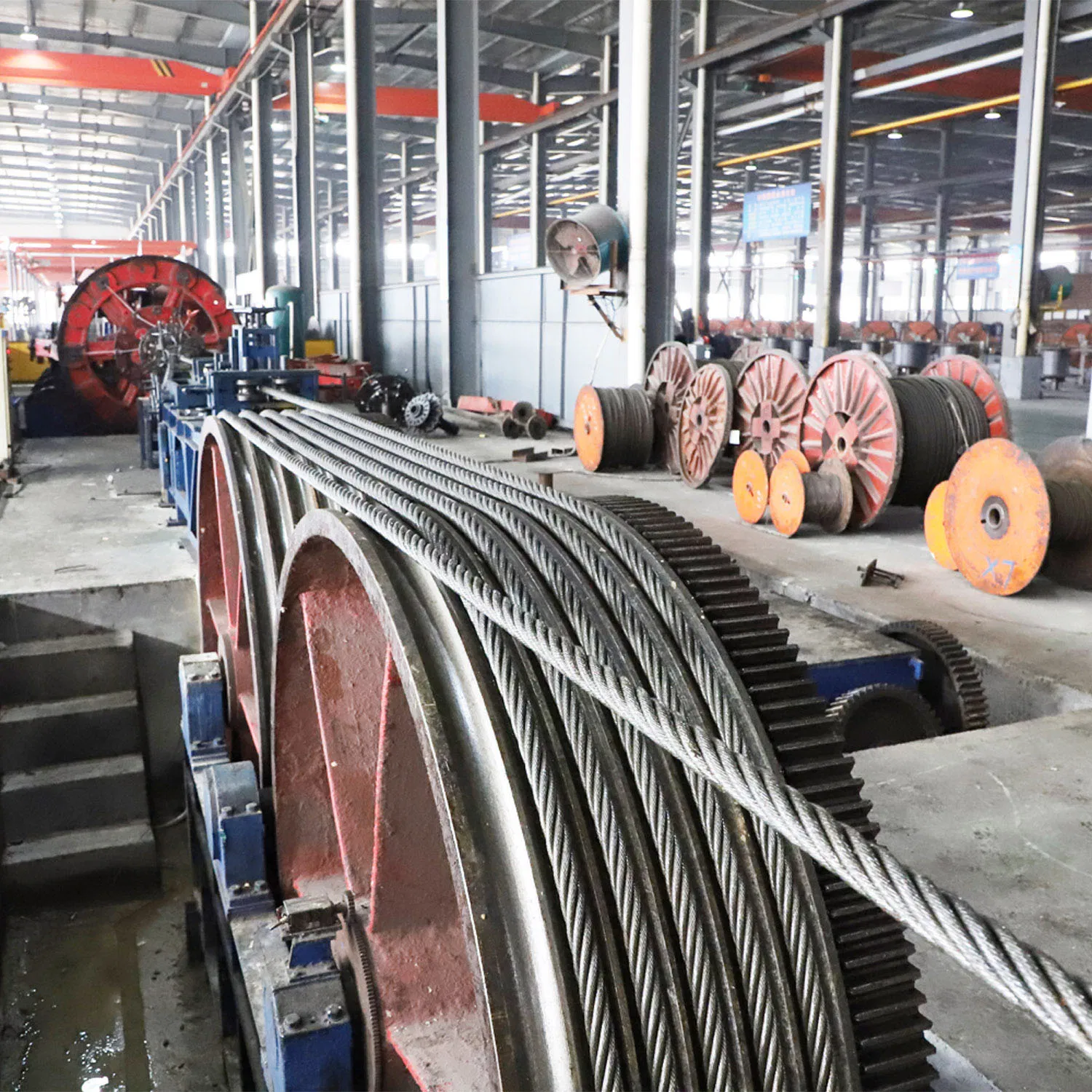
Dive Deeper: The Language of Quality
When you buy a wire rope, you are buying a piece of safety-critical engineering. Standards and certifications are the language we use to communicate that a rope is made correctly. I often talk with purchasing managers who need to justify their choices, and pointing to a respected standard is the best way.
What EN12385-4 Covers
This specific European standard is one of the most recognized for crane ropes. When we certify a rope to EN12385-4, it means we have met strict criteria for:
- Materials: The grade of steel used for the wires must meet specific chemical and physical properties.
- Construction: The dimensions and layout of the wires and strands are precisely defined.
- Minimum Breaking Force (MBF): This is the most critical part. The standard specifies the minimum load a rope must hold before breaking. We test our ropes to ensure they meet or exceed this value.
- Diameter Tolerances: The rope’s diameter must be within a very tight range. A rope that is too big or too small will not spool correctly on the drum.
Other Important Certifications
Besides EN standards, many large projects require third-party verification from classification societies. We often provide ropes with certificates from:
DNV(Det Norske Veritas)ABS(American Bureau of Shipping)BV(Bureau Veritas)RMRS(Russian Maritime Register of Shipping)
These organizations will often send an inspector to our factory to witness the breaking load test. This gives the end-user an extra layer of confidence that the rope they receive is the exact one that was tested and certified.
How to Verify Certification
This is very important. Always ask for the Mill Test Certificate (MTC) for the specific rope coil you are buying. A general company certificate is good, but the MTC is the “birth certificate” for your rope. It should list:
- The unique coil number.
- The exact measured diameter.
- The actual breaking load from the destructive test.
- The standard it was manufactured to (e.g.,
EN12385-4).
A reputable manufacturer will provide this for every single rope without hesitation. It’s your proof of quality.
How Can You Tell If a Manufacturer Provides Genuine Quality and Not Just a Low Price?
The lowest price often hides the highest cost. A cheap rope that fails is more expensive than a quality rope that lasts. How do you spot the difference?
Look beyond the price tag. A quality manufacturer provides detailed mill test certificates, welcomes third-party inspections, has a transparent production process, and can show you a history of supplying to projects similar to yours.

Dive Deeper: Partnering for Success
Choosing a wire rope supplier is more than a transaction. It’s about finding a partner who understands the importance of their product. After years in this business, I’ve learned that trust is built on transparency and proof, not just promises.
The Mill Test Certificate (MTC) is Your Proof
I mentioned this before, but it is the single most important document. A low-price supplier might offer a vague “certificate of conformity.” A quality supplier will provide a detailed MTC with real test data for the exact rope you’re buying. When a purchasing manager from Australia asked me for this, I sent him not only the MTC for his new rope but also the video of the break test. That level of transparency builds trust that lasts longer than a single order.
Ask About Production Lines and Testing
A good manufacturer is proud of their factory. They should be able to tell you about their equipment and their quality control process.
- Production: We operate 10 production lines. This allows us to dedicate specific lines to certain types of ropes, ensuring consistency.
- Testing: We have our own in-house tensile testing machine. This means we can perform destructive tests on ropes regularly, not just when a customer asks for it. We test to ensure we are always meeting the standards we claim.
- Third-Party Inspection: A confident manufacturer welcomes outside inspectors. We regularly host inspectors from
DNV,ABS, and other agencies. It’s an open invitation to verify our quality.
Look for Customization and Support
A quality supplier works with you to solve your problems. They don’t just sell you what’s on the shelf.
- Customization: Do you need a specific type of lubrication for a marine environment? Do you want your company logo printed on the rope? We can do that.
- Assemblies: Do you need the rope delivered with sockets or thimbles already attached? A good supplier has the capability to provide finished assemblies, ready for installation.
- Consultation: I often spend time on the phone with clients not to sell, but to discuss their specific application. Sometimes, the most expensive rope isn’t the best one for their needs. A good partner will help you find the right rope, not just the high-ticket one.
What Are the Signs That Your Crawler Crane Rope Needs Replacement?
Even the best wire rope has a limited service life. Knowing when to retire it is a critical safety skill. Your life and project depend on it.
Key signs for replacement include multiple broken wires in one rope lay, visible corrosion, kinking or “bird caging,” a noticeable reduction in rope diameter, and any significant damage from heat or chemical exposure.
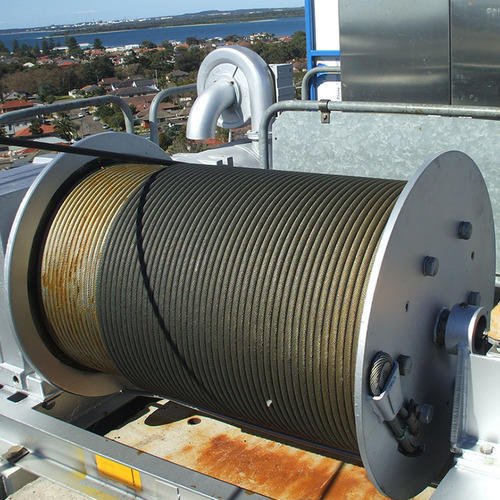
Dive Deeper: Inspect for Safety
A wire rope is a consumable item. It wears out. A diligent inspection program is the best way to ensure safety and prevent unexpected failures. The person inspecting the rope has a huge responsibility.
Visual Inspection Checklist
Your crane operators and maintenance crew should be trained to look for these signs every single day.
| Sign of Damage | What to Look For | Why It’s Dangerous |
|---|---|---|
| Broken Wires | Look for individual wires that have snapped. Pay close attention to the valleys between strands and the sections that run over sheaves. The rules for retirement vary, but a cluster of several broken wires in one small area is a major red flag. | Each broken wire reduces the rope’s overall strength. |
| Reduction in Diameter | Use calipers to measure the rope’s diameter regularly. A noticeable decrease (e.g., more than 5-7%) indicates that the core may have failed or that there is excessive internal wear. | A loss of diameter means a significant loss of strength. The core is no longer supporting the outer strands. |
| Corrosion | Look for rust on the outside. Also, try to pry open a strand slightly to look for rust inside. Internal corrosion is especially dangerous because it’s hidden. | Corrosion weakens the steel and causes pitting, which can lead to wire breaks under load. |
| Kinks & Bird Cages | A kink is a sharp bend that has permanently damaged the rope. A “bird cage” is when the outer strands have opened up and the core is exposed. | These are signs of catastrophic structural damage. The rope has lost its integrity and must be retired immediately. |
| Heat Damage | Look for discoloration (often blue or rainbow-like) on the wires. This can happen if the rope touches a power line or is exposed to extreme heat. | High heat changes the temper of the steel, making it brittle and weak. |
The Importance of a Logbook
For every crane, you should have a logbook dedicated to its wire ropes. Record the date of installation, the hours of use, and the results of every inspection. This creates a history that helps you predict when a rope is nearing the end of its life. It also demonstrates a commitment to safety if an incident ever occurs.
“When in Doubt, Throw it Out”
This is the most important rule in wire rope safety. I have told my clients this many times. If you or your inspector have any doubt about the condition of a rope, do not use it. The cost of a new wire rope is incredibly small compared to the cost of an accident. Protect your people, protect your equipment, and protect your project.
Conclusion
Selecting the right crawler crane rope is about safety, performance, and reliability. Focus on quality, certification, and regular inspection. It protects your investment and your team.

